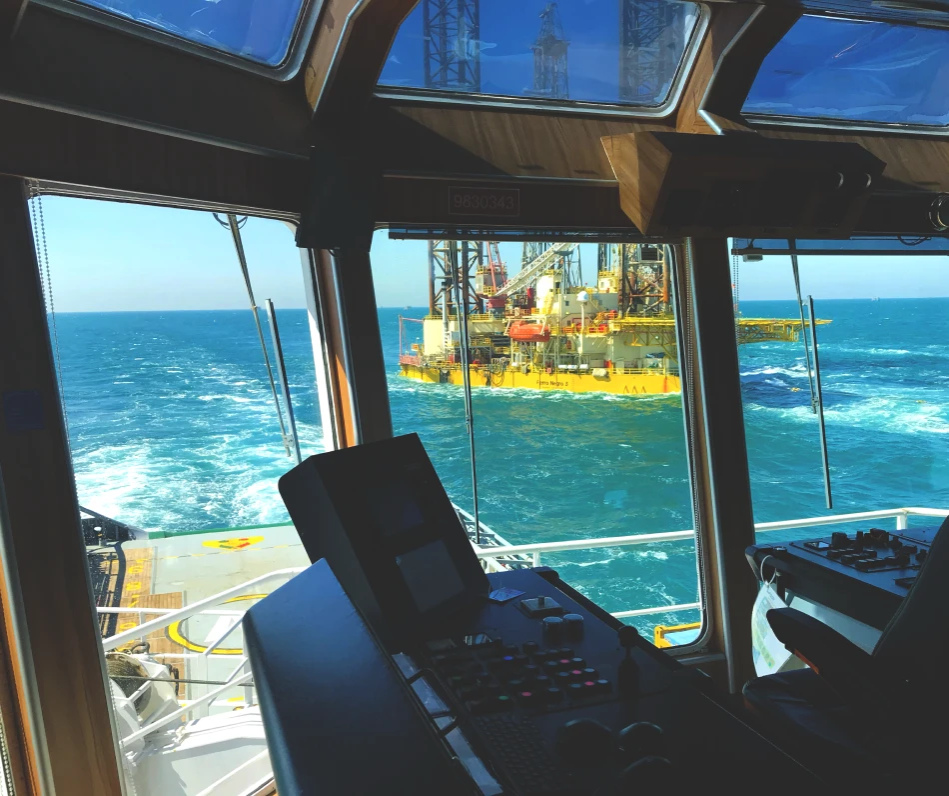Life-saving equipment inspection is an important process aimed at ensuring the safety of the crew and passengers in emergency situations at sea. The inspection of life-saving equipment involves the examination, testing, and readiness maintenance of all rescue devices intended for use in emergencies.
We provide a comprehensive range of services, including the inspection of lifeboats, self-contained breathing apparatuses, life jackets, fire extinguishers, protective suits, and other equipment.
Specialists from Sharky Maritime adhere to a set of international standards and requirements designed to ensure safety at sea — SOLAS, LSA Code, ISM Code, International Standard ISO 9001, STCW Code, SMS (Safety Management System).
These and other standards provide the framework for proper inspection, testing, and maintenance of lifesaving equipment on board, ensuring its operational readiness and preparedness for use in emergency situations.
Proper and regular inspection of lifesaving equipment on board is of critical importance for ensuring safety at sea. This helps prevent potential emergencies and ensures swift and efficient response when needed.
The specific list of lifesaving equipment required to be placed on a vessel depends on the type of craft, the number of crew and passengers on board, and the requirements outlined in official documents.
Most commonly, this includes lifeboats, rescue boats, liferafts, boats, individual lifesaving appliances, lifebuoys, immersion suits, communication devices, EPIRB (Emergency Position-Indicating Radio Beacon), distress signaling equipment, and firefighting equipment.
We will assist you in procuring high-quality LSA (Lifesaving Appliances) and FFE (Fire Fighting Equipment) systems, signaling pyrotechnics, and necessary literature.

The inspection of life-saving equipment on board involves the examination and testing of the operational status of the following items:
Another mandatory stage of life-saving equipment inspection involves checking living quarters on board the vessel, as well as gangways and pilot ladders.
Technical maintenance of emergency life-saving equipment and apparatus allows for keeping the inventory in operational condition and saving significant amounts on purchasing new items. Our range of services includes:
The Sharky Maritime team possesses extensive experience in inspecting and servicing emergency and firefighting equipment. We will do everything to ensure that your vessel meets all safety requirements perfectly and promptly. We offer a comprehensive range of services and will assist in purchasing the necessary equipment.





In matters of ensuring maritime safety, it is crucial to select reliable partners. You've come to the right place! By choosing our services, you are investing in the security, efficiency, and impeccable reputation of your business.
Sharky Maritime is a team of specialists ready to ensure your safety at sea. We meticulously inspect every detail responsible for saving lives and provide you with professional recommendations based on inspection results for equipment maintenance and replacement.
We maintenance of safety equipment in various ports on the Black Sea coast, including Odessa, Chornomorsk, Yuzhny, Nikolaev, Izmail, Reni, Giurgiulesti and Constanta.
The time required for a life-saving equipment inspection on a vessel can vary depending on various factors such as the vessel's size, the quantity of equipment, its complexity, the presence of special features and technical specifications, as well as the experience of the inspectors. Generally, an inspection can take anywhere from a few hours to several days. Simple and standard equipment checks can be completed within a short timeframe. However, if a more detailed and thorough inspection is required, especially for larger vessels or complex systems, the inspection may take longer. It's important to note that safety is always a priority, so inspectors may allocate additional time to ensure a meticulous examination of the equipment and its readiness for use in emergency situations.
The presence of emergency and life-saving inventory on a vessel is a crucial aspect of its readiness for navigation. Failure to conduct timely inspections of life-saving equipment on a vessel can lead to serious consequences and impact various aspects:
Confirmation of timely life-saving equipment inspections is indicated by the Safety Management Certificate (SMC), a testament to safety management.
The specific list of life-saving equipment that must be present on a vessel depends on factors such as the type and size of the vessel, the number of passengers, and many other considerations. During consultation, our specialists will provide a comprehensive inventory list required by regulations specifically tailored to your vessel.
According to SOLAS requirements, life-saving equipment undergoes weekly and monthly inspections. Weekly inspections cover life rafts, all duty and rescue boats, their engines, and the operation of lifesaving appliances in both forward and reverse modes. Emergency lighting on the vessel is also inspected weekly. All life-saving equipment present on board the vessel is inspected once a month. The results of all inspections are documented in official and ship's logs.
Various methods and technologies are employed to assess the functionality and condition of life-saving equipment on a vessel, aimed at ensuring the safety of the crew and passengers. Some of these include visual inspections, functional tests, load testing, the use of specialized sensors and detectors, and testing of signaling and lighting devices. The effective combination of these methods and technologies provides an accurate and comprehensive assessment of the condition of life-saving equipment and ensures its readiness for use when needed.
The assessment of the condition of life-saving equipment is based on the results of our research. We analyze multiple indicators, test products according to the instructions specified in regulations and normative documents, and, in case of malfunctions or deviations in operation, document these findings and provide the client with a report containing recommendations for their resolution.
